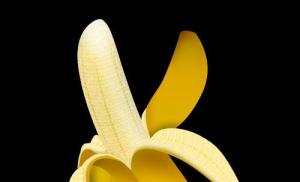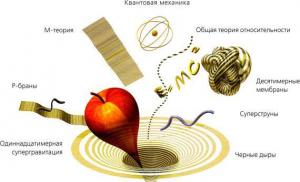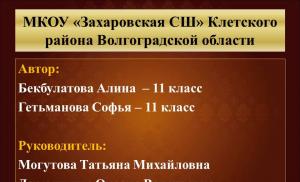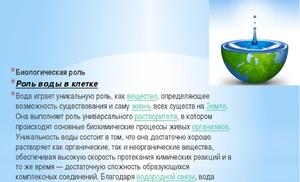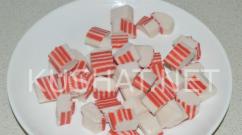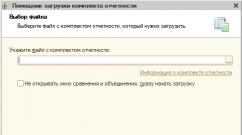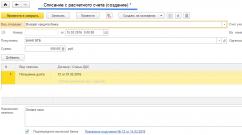"Disappearing" portraits. Whitening
By expressing our feelings about the deceased, we strive to preserve his memory for as long as possible. For this purpose, since time immemorial, it has been customary to install a monument made of natural stone, metal or using other materials at the grave of the deceased. The monument must contain information about the person buried in this grave: last name, first name, patronymic, years of birth and death, and a short epitaph. In the old days, when most of us had such low salaries that they could not afford to pay the cost of making a monument from marble or granite, we had to limit ourselves to monuments made from concrete. However, inscriptions on concrete are very short-lived, since their condition is affected by weather conditions such as rain, fog or snowfall. Over the years, individual letters seem to be erased, and it is necessary update the inscription on the monument.
Technology for updating inscriptions on monuments
We carry out using modern technologies and materials. But in any case, the order of work is as follows:
The type of paint or other materials (for example, gold leaf) that will be used to update the inscription is agreed upon with the customer;
Before work on updating the inscription begins, the surface of the monument and the location of the inscription are thoroughly cleaned, and all traces of old paint are removed;
The places where the paint will be applied must be primed using a special primer composition for each of the materials used to create the monument;
After the primer has completely dried, the inscription is made, for which in most cases we use acrylic paint of the desired color or paint that imitates gold;
Excess paint, if any appears during the process of applying the inscription, is removed, and the paint is dried, for which we use a hair dryer.
Our guarantees
The technology we use to update the inscription on the monument allows us to impregnate the slightest roughness and pores in the material of the monument with paint, allowing us to guarantee the customer the long-term service of the updated inscription. During several years gravestone inscriptions written on the monument will not require updating, since the inscription will retain its bright graphic features for a long time, allowing it to be read even at a distance from the monument. It is also important that with a high-quality inscription, the process of caring for the monument is greatly facilitated. Even in inclement weather, the monument will look well-groomed. If you need to update the inscription on a grave monument or correct the coloring of the inscription, call the numbers listed on the website and order updating the inscription. At the same time, you can order other types of services we provide.
Practical tips: how to update the inscription on a monument yourself, stages of work, necessary materials and tools.
Question one: how to update the inscription on a granite monument yourself, if the paint has faded or faded?
Over time, inscriptions, images and other carved elements fade under the influence of precipitation and natural phenomena. If the inscriptions have faded, but the old layer of paint holds firmly, then to restore the color, it will be enough to paint the element again, on top of the old layer.
For this:
1. Remove all dirt;
2. Wipe the area to be painted with a damp cloth and wait until it dries completely;
3. Use sandpaper to clean the painted area (use fine-grained paper);
4. Wipe the area where the new layer is applied with degreasing liquid;
5. Cover the area to be painted along the contour with masking tape for protection;
6. Apply special mascara for tombstones with a brush;
7. The work is finished.
Question two: how to update the inscription on a monument with your own hands, if the paint has completely or partially peeled off or fallen off?
 You may encounter a problem that the paint is slowly starting to flake off and fall off. In this case, a comprehensive restoration will be required.
You may encounter a problem that the paint is slowly starting to flake off and fall off. In this case, a comprehensive restoration will be required.
For this:
Repeat all of the above procedures, but in step 3, first use coarse sandpaper (an additional tool may be required) and completely remove the layer of old paint from the monument. The procedure for complex restoration of inscriptions takes more time. It is quite difficult to completely remove an old layer of paint, because after the initial application it is deeply absorbed into the porous structure of the stone. You may need a tool for this procedure: a thin chisel, a utility knife (stationery knife), a hammer.
Note: DIY restoration and painting are not durable. For professional stripping and painting, OBELISK specialists use grinding machines and special deep penetration products to clean old paint. Work on the complete restoration of the monument as a whole (not individual elements) is carried out in the grinding shop and this will require dismantling the stele.
Over time, due to the influence of the environment and unfavorable climatic conditions, the inscriptions on the monument may lose their original appearance - fade, change color. Sometimes, the text on a tombstone, over time, can become barely visible. Our master engravers provide services for on-site restoration of inscriptions on the monument and can return the monument to its original appearance. You can update the inscription on a granite monument in the following ways:
- Slightly recessing existing text allows it to be clearly visible again;
- covering the inscription, or with paints of different colors (bronze, white, black).
Price for restoration of inscriptions
| Type of work | Price |
|---|---|
| One inscription (full name + dates) | from 8,000 rub. |
| Two inscriptions (full name + dates) | from 10,000 rub. |
| Three or more inscriptions | negotiable |
| Restoration of gold leaf | 1,000 rub. sign |
| Restoration of an A4 size portrait | 8,000 rub. |
| Restoration of an A4 size portrait + one inscription | 12,000 rub. |
| Visit of a specialist to the site, Moscow and Moscow region | for free |
| To find out the exact cost, contact our managers by phone or e-mail, and they will calculate the exact cost of restoring the inscription or portrait. | |
Examples of restoration of inscriptions on monuments
Example No. 1 - covering letters with black paint.
The inscription on the installed monument was restored using special black paint.
Example No. 2 - covering the inscriptions with gold paint.
Time has almost completely erased the text from this tombstone, installed back in the eighties. We finally removed the old layer and re-painted the inscription, the cross and the image of carnations.
Example No. 3 - restoration of gold leaf.
The inscription made of gold leaf and the cross was restored - the old coating was removed and a new one was applied.
Example No. 4 - restoration of inscriptions on polymer granite.
This example shows the updating of severely faded inscriptions and portrait on a polymer granite monument, and the engraving of a new inscription while maintaining the overall style.
Example No. 5 - updating the inscription.
This example shows the removal of old gold leaf, which has tarnished and partially fallen off, and covering the lettering and laurel branch with contrasting white paint.
Example No. 6 - deepening the old inscription and engraving a new one.
In this case, the task was set to restore the inscription on the monument; our specialist deepened it a little, which made the text clearly visible again.
Example No. 7
The letters of the names were further deepened and covered with gold leaf; an oval was applied to the monument, framing the portraits, which was also covered with gold leaf.
Example No. 8 - cleaning up old inscription.
In this example, it was necessary to update the inscription on the monument, made in the 90s. Due to natural influences, it has become almost invisible.
Example No. 9 - restoration of a marble tablet.
Restoring the inscription on a marble tablet with the date corrected. The cracked ceramic photo-oval was replaced with a new one, the old paint was removed from the letters and a new coating was applied.
Example No. 10 - covering letters with gold leaf.
Gold leaf was applied to the letters of two busts, as well as to the inscription of the memorial stele. Gold leaf goes well with Baltic (Dymovsky) granite and the inscriptions look expressive and are in harmony with the texture of the stone.
Example No. 11 - covering old and new inscriptions with gold leaf.
We updated the old, slightly worn, inscription on this monument and added a new one, covered with gold leaf.
Example No. 12 - covering the inscriptions on the monument with gold.
Example No. 13 - updating the inscription.
The inscriptions, which have lost their appearance over time, have been updated. The old coating was removed and a new one was applied. The work was carried out on site, without dismantling.
Example No. 14 - bronze paint
On this monument we covered the inscription and cross with bronze paint; this color contrasts well with the granite from which the tombstone is made and the text is visible clearly and clearly.
Our engravers can restore the inscription on an installed granite monument, as well as tombstones made of any other material, be it natural marble, polymer granite or marble chips. Professional engraving is an order of magnitude superior in quality to amateur engraving, so don’t wonder how to restore the inscription on a monument with your own hands, but contact our craftsmen.
Restoring the inscription on a monument with your own hands can only be done if you have already had experience working with stone, otherwise we strongly do not recommend doing it yourself. Each type of natural granite and marble has its own characteristics, density and structure, so without the necessary preparation and experience, you can ruin an expensive tombstone.
Our craftsmen have worked with all common types of stone, they know the characteristics of each granite and marble, their extensive experience is a guarantee of high-quality work on the restoration of the inscription on a granite or marble slab.
Over time, a granite or marble monument in a cemetery may lose its aesthetics and crack. The inscriptions on it fade, as do photographs and drawings. Fortunately, there is no need to purchase an expensive item again, because the monument can be restored with your own hands. It’s worth finding out in advance what paint to paint the monument with, buying the necessary materials, and getting to work.
In order not to resort to the services of restorers, who are very expensive, it must be properly cared for throughout the entire service life of the tombstone. Here are practical tips to follow after installing a product made of concrete, granite, marble, and other materials:
- do not plant trees or shrubs next to the monument, which can damage the product with their roots, do not make flower beds - all plants attract moisture, which negatively affects the stone;
- do not use aggressive household chemicals, ordinary synthetic detergents for the kitchen and bathroom - they destroy the surface of the stone and weaken the adhesion of particles;
- Do not allow hot water or fire to come into contact with the stone slab - stains will appear on it.
It is better to cover expensive marble for the winter if there is a high probability of severe frosts in the region. For this purpose, films and waterproof covers are used. If small chips or scratches appear, you should purchase a special polish, paste, or other protective agent that will prevent the stone from deteriorating further.
Restoring the inscription on the monument
Even the most persistent letters on monuments gradually lose their brightness and clarity. Restoring an erased stone inscription can be done with your own hands - it will not take much time and will not cause extra costs.
Paint selection
To paint monuments, you need to choose consumables very carefully, because the wrong composition will quickly peel off or will not stick to the surface at all. Sometimes, even with successful painting, the monument immediately cracks and peels after the paint has dried, which will make the product look even worse. Cleaning areas of paint can also cause problems as there is a high chance of scratching the stone.
To paint monuments and apply letters, you need to buy special materials. Acrylic products labeled “for marble for exterior use” work well. They can be used to update inscriptions, paint borders, and other cemetery structures. The paint is suitable not only for marble, but also for granite and artificial stone. Typically, such products are not used in the restoration of foundations for the installation of which cementless plasters were used.
The advantages of paints for marble are:
- long service life;
- high resistance to UV radiation;
- good vapor permeability.
There are paints of different colors on sale. Usually, to restore the inscriptions on the monument, materials of gold, silver, and less often black are used. The coating can be matte or glossy. The products dry quickly - in 1-2 hours, do not have an unpleasant odor, and are applied with a thin brush. If the paint has thickened, it can be diluted with plain water. The service life of the surface after painting reaches 5-10 years.
At home, “traditional craftsmen” often change the properties of paints themselves, making them suitable for working on stone. To keep the paintwork on the monument, add a little borax solution and a few drops of nitric acid to the usual acrylic composition (it can be replaced with nitrate salt). Afterwards, the pigment of the desired color is introduced into the white composition.
In addition, you can make your own paint with a metallic sheen based on bronze or aluminum powder. The powder is diluted with liquid gelatin, egg yolk, and various adhesives that are suitable for stone. The more metal powder in the base, the brighter the color of the inscription on the monument. It is best to make paint with the consistency of thick sour cream. Don't make the layer too thick, it will crack faster.
Necessary materials
To work you will need the following tools and items:
- plastic spatula;
- cleaning paste;
- soft cloth;
- solvent (acetone, alcohol);
- ready-made paint for stone;
- brush;
- finish layer fixer.
Operating procedure
First, the monument is prepared for work. Wipe it well with a wet cloth and let it dry. It is important that there is no lichen, moss, or any plaque on the monument: they will have to be cleaned after softening with special pastes for stone based on phosphoric acid.
Apply the paste, leave for 15 minutes, then remove dirt with a spatula. Then the area to be worked with is degreased with acetone and alcohol. In fresh air, solvents dry instantly, so you need to wipe the base quickly.
- The procedure for restoring the inscriptions is as follows:
- wet the brush in paint;
- squeeze excess paint on the edges of the container;
- apply an inscription using existing letters or add your own signs and drawings;
- let the paint dry;
apply the finishing coat (it is better if it is in the form of a spray).
You need to work with such paints quickly; they dry right on the brush, which is also facilitated by windy weather. You can improve the structure of the inscription and make it clearer without painting - by polishing with zinc powder.
This method is suitable if the paint has just begun to fade and has not worn off. Place the powder on a napkin, rub it well into the engraving on the monument, and the letters become bright, rich, and contrasting. You will have to use the method often - 1-2 times a month.
- Painting portraits and inscriptions on a granite monument
- It is easier to update a portrait or inscription on granite than on marble. This material is less difficult to maintain, responds more easily to the use of solvents, and the risk of discolored spots is lower. Large surfaces are painted using special sprayers; inscriptions are made with thin brushes over existing engraving. Most often, the following data is manually applied to the stone:
- dates of birth and death;
- drawings and ornaments;
words of sorrow;
portraits.
Experts also use a more reliable method of drawing inscriptions - using acid etching. Acid is applied to the monument in the right places, which leaves behind bright traces. This technology is complex; it is practically not used by specialists at home.
After sanding, degreasing is carried out and paint is applied in the same way. It is not recommended to work independently with expensive monuments; to do this, it is better to take the product to a restoration shop, where it will be given the appearance of a new thing without the risk of irreparable damage.
Over time, the granite monument loses its appearance, cracks and chips appear on it, inscriptions and drawings fade. Therefore, many are wondering whether it is possible to restore the brightness and aesthetic appeal of portraits and epitaphs on monuments. We will answer that it is possible. Indeed, today there are several ways to update the ritual engraving on tombstones: on your own or seek help from specialists.
The most effective way to restore inscriptions is to use the services of professionals. Of course, if we take into account the financial side, not everyone can use the services of restorers. You can do the work yourself, but initially it is advisable to become thoroughly familiar with the rules of restoration and all the materials used.
Restoring gravestone inscriptions yourself
Restoring faded inscriptions is a labor-intensive and complex process that includes several stages. First of all, it is necessary to clean the monument from all kinds of contaminants (lichen, moss, plaque, colored stains) using special pastes. The phosphoric acid paste is carefully applied with a small brush to the engraved text and left for 10-15 minutes, allowing to dry. The paste is then removed with a small spatula. The disadvantage of this procedure is that chemicals may remain on the natural stone. Therefore, this cleaning step must be performed very carefully.
You can also clean the stone mechanically, by grinding the surface. For this purpose, gentle technologies of mechanical cleaning of natural stone are used. It is worth noting that this method can damage the polished surface. Zinc powder will help maintain the clarity of inscriptions on a granite monument or insert. Zinc oxide is applied to a cloth and then rubbed over the engraved text. Due to this, the engraved inscription and image become more contrasting, rich and bright. Please note that this method is only suitable for granite monuments or engraved inscriptions made on inserts. This method should be used regularly, several times a month. Then the drawing and epitaph will remain in good condition for a long time.
Many monuments are painted with “gold paint”. They require special care and periodic renewal. Under the influence of external factors (sun, rain, snow, hail), paint particles peel off and fall off, causing the inscription to fade and become sloppy. It is necessary to tint the letters with a special paint intended for stone, and not acrylic, as many recommend. Restoring inscriptions on your own is good, but it is best to contact the specialists of the company “Monuments Kharkov”, who will qualitatively restore inscriptions and photo portraits. The company has special equipment and all professional stone care products. By turning to specialists for help, the memorial complex or monument will shine with “new life.”
